The Astor family achieved prominence in business, society, and politics in the United States and the United Kingdom during the 19th and 20th centuries. With German roots, some of their ancestry goes back to the Italian and Swiss Alps, the Astors settled in Germany, first appearing in North America in the 18th century with John Jacob Astor, one of the wealthiest people in history.
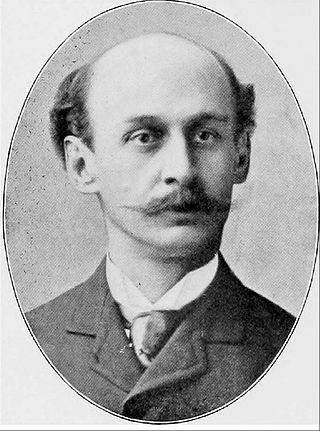
Henry Janeway Hardenbergh was an American architect, best known for his hotels and apartment buildings, and as a "master of a new building form — the skyscraper." He worked three times with Edward Clark, the wealthy owner of the Singer Sewing Machine Company and real estate developer: The Singer company's first tower in New York City, the Dakota Apartments, and its precursor, the Van Corlear. He is best known for building apartment dwellings and luxury hotels.
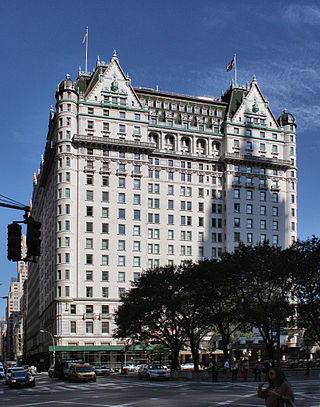
The Plaza Hotel is a luxury hotel and condominium apartment building in Midtown Manhattan in New York City. It is located on the western side of Grand Army Plaza, after which it is named, just west of Fifth Avenue, and is between 58th Street and Central Park South, at the southeastern corner of Central Park. Its primary address is 768 Fifth Avenue, though the residential entrance is One Central Park South. Since 2018, the hotel has been owned by the Qatari firm Katara Hospitality.

The architecture of Atlanta is marked by a confluence of classical, modernist, post-modernist, and contemporary architectural styles. Due to the Battle of Atlanta and the subsequent fire in 1864, the city's architecture retains almost no traces of its Antebellum past. Instead, Atlanta's status as a largely post-modern American city is reflected in its architecture, as the city has often been the earliest, if not the first, to showcase new architectural concepts. However, Atlanta's embrace of modernism has translated into an ambivalence toward architectural preservation, resulting in the destruction of architectural masterpieces, including the Commercial-style Equitable Building, the Beaux-Arts style Terminal Station, and the Classical Carnegie Library. The city's cultural icon, the Neo-Moorish Fox Theatre, would have met the same fate had it not been for a grassroots effort to save it in the mid-1970s.

Mills House No. 1 or the Mills Hotel at 160 Bleecker Street in Greenwich Village, Manhattan, New York City was built as a hotel for poor men. It was funded by banker Darius Ogden Mills and designed by Ernest Flagg and opened in 1897. The building is now The Atrium.

The Hotel Wolcott is a hotel at 4 West 31st Street, between Fifth and Sixth Avenues, in the Midtown South neighborhood of Manhattan in New York City. Constructed between 1902 and 1904 by developer William C. Dewey, it was designed by John H. Duncan in the French Beaux-Arts and neoclassical styles. The hotel's namesake was Henry Roger Wolcott, a businessman, politician, and philanthropist. The hotel is a New York City designated landmark.
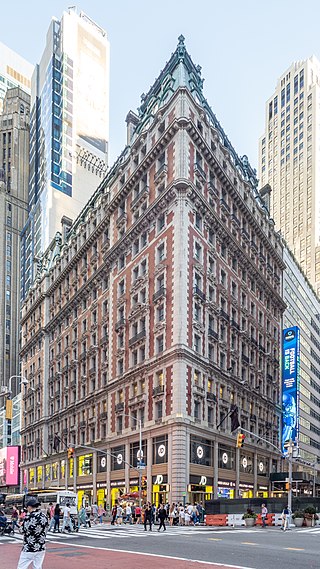
The Knickerbocker Hotel is a hotel at Times Square, on the southeastern corner of Broadway and 42nd Street, in the Midtown Manhattan neighborhood of New York City. Built by John Jacob Astor IV, the hostelry was designed in 1901 and opened in 1906. Its location near the Theater District around Times Square was intended to attract not only residential guests but also theater visitors.
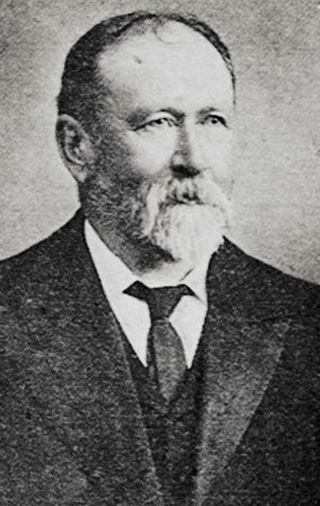
Alfred Kidd was a New Zealand politician of the Liberal Party. He was the 18th Mayor of Auckland.

The Fifth Avenue Hotel was a luxury hotel located in Manhattan, New York City from 1859 to 1908. It had an entire block of frontage between 23rd Street and 24th Street, at the southwest corner of Madison Square.
The Studebaker Building is a former structure at 1600 Broadway on the northeast corner at 48th Street in Manhattan, New York City. It was erected by the Juilliard Estate, in 1902, between Broadway and 7th Avenue, in the area north of Times Square. It was demolished in 2004 to make room for an apartment tower, a twenty- five story, 136 unit, luxury condominium designed by architect Einhorn Yaffee Prescott.
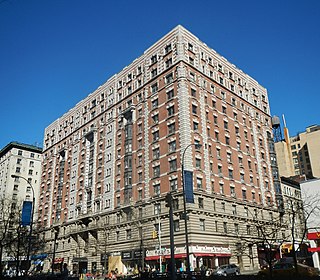
Bretton Hall is a twelve-story residential building at 2350 Broadway, spanning from West 85th to 86th Street on the Upper West Side of Manhattan, New York City.
Hotel Pierrepont was an establishment located at 43 West 32nd Street between Broadway and Fifth Avenue in Manhattan, New York City. Completed in 1906, the building was twelve stories tall, made of fireproof brick and stone. It had a cellar and a subcellar. It had one hundred seventy rooms, with single rooms and suites, and ninety bathrooms. The edifice measured fifty-nine feet by ninety-eight and nine tenths feet. It was located adjacent to the Rogers Peet building. Hotel Pierrepont is important to the history of Manhattan in the early 20th century. It is memorable for its prime location.

The Dorilton is a luxury residential housing cooperative at 171 West 71st Street, at the northeast corner with Broadway, on the Upper West Side of Manhattan in New York City. The 12-story building, designed by local firm Janes & Leo in the Beaux-Arts style, was built between 1900 and 1902 for real estate developer Hamilton M. Weed. The Dorilton is a New York City designated landmark and is listed on the National Register of Historic Places.

The Peninsula New York is a historic luxury hotel at the corner of Fifth Avenue and 55th Street in the Midtown Manhattan neighborhood of New York City. Built in 1905 as the Gotham Hotel, the structure was designed by Hiss and Weekes in the neoclassical style. The hotel is part of the Peninsula Hotels group, which is owned by Hongkong and Shanghai Hotels (HSH). The structure is 23 stories high and, as of 2022, contains 241 rooms.
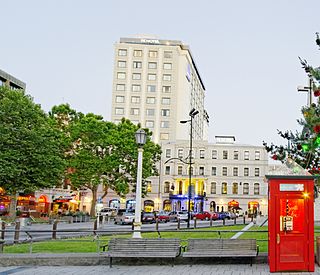
Warner's Hotel in 50 Cathedral Square, Christchurch is the site of a hotel established in 1863. The original building, extended on numerous occasions, burned down in 1900. A new building was built in 1901. Again, it underwent numerous alterations. A fourth storey was added in 1910 and the northern end of the building was demolished in 1917 and a theatre built in its place to create a noise buffer to the printing presses of the adjoining Lyttelton Times Building. The theatre was demolished in 1996 and patrons enjoyed a beer garden. In 2010, a high-rise Novotel hotel opened on the site of the beer garden and in the process, the historical and symmetrical 1901 façade was recreated.

The Park Theatre (est.1879) was a playhouse in Boston, Massachusetts, in the late 19th and early 20th centuries. It later became the State cinema. Located on Washington Street, near Boylston Street, the building existed until 1990.

St. Elmo Steak House is a restaurant in the Wholesale District of Indianapolis, Indiana, United States. Founded in 1902, it is the oldest steakhouse in Indianapolis. Its specialty shrimp cocktail has earned wide recognition in the American culinary scene. In 2020, it was among the 25 highest-grossing independent restaurants in the U.S. with annual sales exceeding $21 million.

John Endean made his money in gold mining in three countries. He settled in Auckland, New Zealand, where he was a hotel proprietor. The Endeans Building built for him on Auckland's Queen Street is a landmark that is registered with Heritage New Zealand; his private residence in Symonds Street is also a registered heritage building.

The Pabst Hotel occupied the north side of 42nd Street in Manhattan, New York City, between 7th Avenue and Broadway, in Longacre Square, from 1899 to 1902. It was demolished to make room for the new headquarters of The New York Times, for which Longacre Square was renamed Times Square.

The Howard Hotel, also referred to as Howard's Hotel or the Howard House, was a well-known New York City hotel in the mid-19th century, located in Lower Manhattan at the corner of Broadway and Maiden Lane.




















